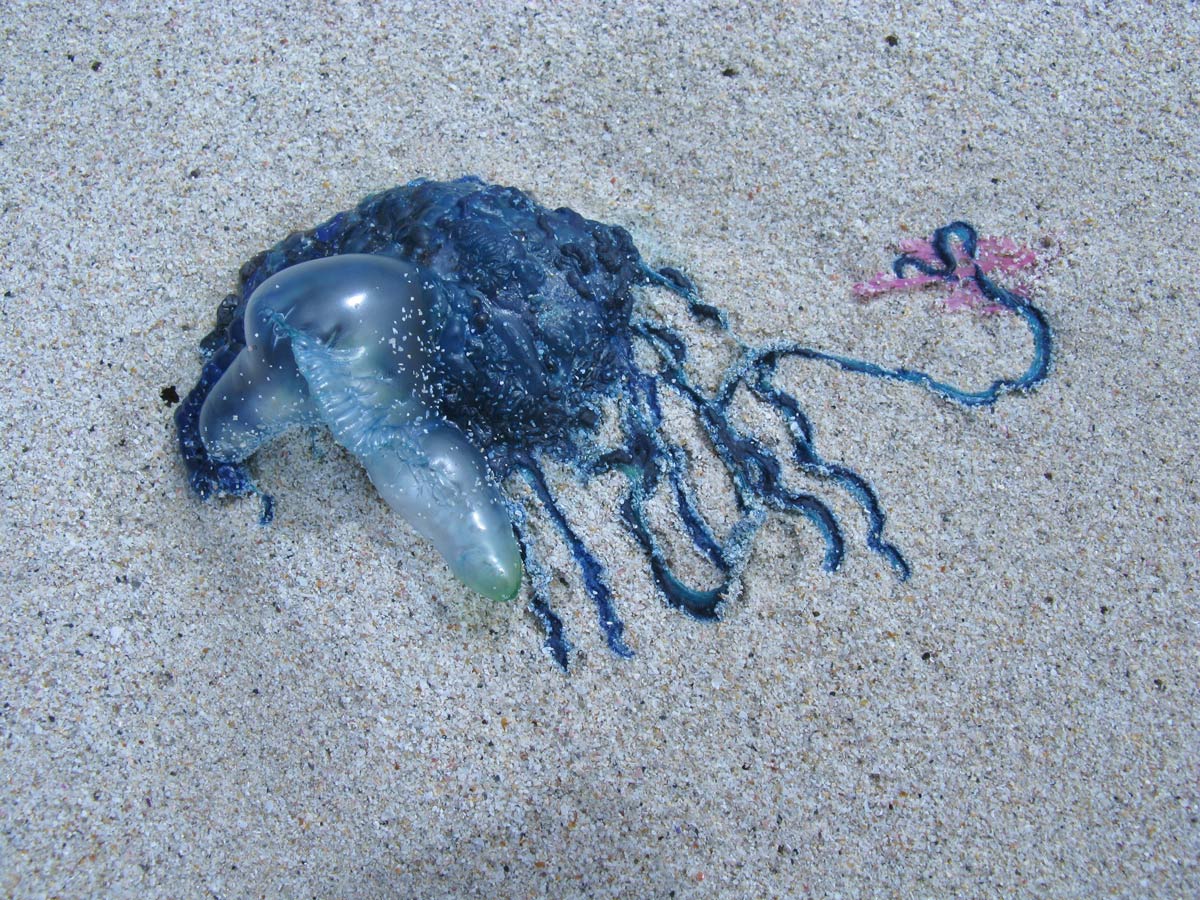Looking like a jellyfish with an inflated bell, the Portuguese man-of-war (Physalia Physalis) is often mistaken for just that. Both animals have bulbous bells, long tentacles and stinging nematocysts, and both live in tropical and sub-tropical waters. But the Portuguese man-of-war is not a jellyfish at all, but rather a colony of organisms.
The technical term is siphonophore: an animal comprised of multiple organisms working together. The Portuguese man-of-war is comprised of four such organisms, so specialized in their tasks that their survival is dependent upon one another.
The inflated part of the Portuguese man-of-war is the pneumatophore, a gas-filled bladder. This rises above the water surface by as much as six inches and contains up to 90 percent carbon dioxide. During times of distress, the Portuguese man-of-war can deflate this bladder, allowing it to submerge. To ensure species survival, the tilt of the float located atop the gas bladder differs among organisms. Some man-of-wars have floats that lean to the left; others have floats that lean to the right. This allows the wind to push half of the animals in one direction, leaving the other half headed in the opposite direction. If a large onshore breeze picks up, only half of the animals would potentially wash ashore and die.
The second organism comprising this animal is what people fear about the Portuguese man-of-war — its long tentacles. Man-of-wars have been found with tentacles up to 165 feet long, each one teeming with hundreds of thousands of nematocysts. Stinging tentacles evolved to capture and paralyze prey, such as plankton, small fish and crustaceans, as well as for self-defense.
The third organism comprising the Portuguese man-of-war is a polyp containing the animal’s digestive enzymes. After the tentacles have captured the prey, feeding tentacles called gastrozooids will attach to it, reeling it into the mouth.
The fourth and final organism houses the reproductive system. Large numbers of these animals congregate during the spawning season and release their gametes into the water. Once fertilized, asexual budding allows the larvae to form new Portuguese man-of-war colonies.
Due to their lack of motility, or as a result of currents and wind, these animals tend to congregate in large groups, which can exceed 1,000 or more. You’ll typically find them in open water away from beachgoers, but it is not uncommon for a stray animal to blow into shore if conditions are right.
The sting of a Portuguese man-of-war is extremely painful, although rarely deadly. Like jellyfish, even a dead Portuguese man-of-war washed ashore can still deliver a nasty sting. Take care to avoid all contact with these animals with the aid of barrier materials, such as gloves and thick protective attire. If a sting does occur, carefully remove any tentacles from the injured area, avoiding any physical contact. Rinse the area well using seawater or freshwater. Avoid using vinegar on Portuguese man-of-war stings, which can cause any remaining nematocysts in the area to activate. Apply ice to the area to help with pain. Monitor victims for shock and signs of allergic reaction. If symptoms persist or worsen, seek immediate medical attention.


